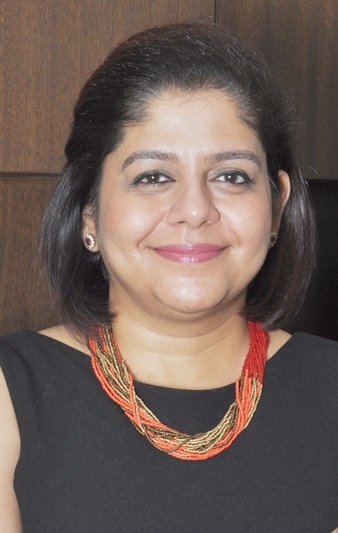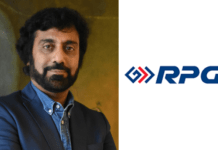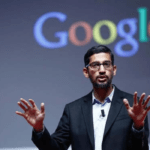Seema Nambiar, senior director, people resources, McDonald’s India–West & South, has been associated with the Quick-Service-Restaurant (QSR) sector for some time now, and been part of the McDonald’s family for more than 15 years. Prior to this, she managed employee training for Domino’s India.
In her current role, she is responsible for ensuring seamless integration of company and people strategies at McDonald’s, West and South divisions. She focusses on enhancing the company’s employer brand image, and works towards creating a heightened Employee Value Proposition. In her previous role at McDonald’s, Nambiar was head – learning, development and strategy planning.
While sharing the employee development programmes at McDonald’s with HR Katha, she talks about how McDonald’s helps its employees build a career and not just pursue a job which is quite unusual in the QSR sector. Excerpts
The Quick-Service-Restaurant (QSR) sector attracts a lot of first-timers, who generally see it as a part-time job while pursuing other interests. Has McDonald’s India brought in a change?
Yes, it may be true for other QSR, but at McDonald’s there is the option of building a structured career. It is an employer of opportunity providing quality employment and long-term career prospects for first-time job seekers.
In fact, developing talent from within the organization is part of McDonald’s global culture. A testimony of this is the fact that several of our company’s top executives started their careers in McDonald’s as restaurant crew. Also, over 40 per cent of the team at our corporate office has been internally hired from our restaurant operations team. For instance, Ranjit Paliath, who is currently the vice-president, business operations – West & South India, had joined the McDonald’s family in March, 1995, as trainee manager at our first restaurant in Bandra. He was one of the few involved in the inception process of McDonald’s in India.
This is not the sole example. Naveen Shibrur joined McDonald’s in the year 2000, after completing his 12th standard. Today, as the operations manager, he manages around 30 restaurants. While on the job, he got the opportunity to complete BBA (Retail) and then also managed to do an MBA from Welingkar, Mumbai. His skills have been enhanced through various in-house training programmes also.
We take on energetic, young people and develop them into leaders through an effective combination of training programmes and relevant work experience.
How do you prepare your workforce for leadership and senior roles? Is there a practice that McDonald’s India follows?
We take on energetic, young people and develop them into leaders through an effective combination of training programmes and relevant work experience. This is backed by an extensive development programme that enables the crew to rise within the organisation and take on leadership — be it at the restaurant, at the operations level or at our corporate office.
We strongly believe that training is an important tool for employee engagement. Yes, we do have structured training and employee engagement processes, which have become an industry practice in the QSR sector.
Every employee at McDonald’s is imparted with ‘Skills for Life’. We believe that these skills will be helpful to them always, irrespective of the career they choose in the future. We also provide focussed and sustained training sessions, based on individual strengths and career needs. Besides, we impart in-class training curricula as well as on-the-job learning at various levels within the organisation.
There are also various programmes, which help speed up an employee’s growth. One such programme, that spans over 6–9 months, is EnergiZe, which aims to accelerate growth and energise the selected second-assistant managers to move into positions of RLP-certified managers.
Employees who are high school graduates are also encouraged to pursue higher studies. We have established alliances with institutes to provide special courses at discounted fees to our employees. These include, the Veta Fluent English course, BBA in Retail as well as post-graduate courses at Symbiosis, Welingkars’ and Richard Ivey School of Business.
At McDonald’s, fun, flexibility and future are at the core of our Employee Value Proposition.
What are the basic skill requirements of a person to be hired as a trainee? How does McDonald’s enhance the skill set of its employees?
McDonald’s evaluates entry-level employees, who need to be at least 18 years old, on a combination of aptitude and attitude-based parameters. Since several of our trainee-level hires could also be high-school graduates, we look beyond specific job skills alone and assess candidates on their verbal and critical reasoning aptitude, customer-service orientation, team player mindset as well as their passion and energy to build a career in the QSR industry.
We make use of GATE (Global Assessments and Test Environment), a recruitment application, which is provided for each candidate who has applied to McDonald’s and taken the psychometric assessment as part of the selection process. This helps in evaluating employees and enabling them to become faster and smarter. In order to minimise the language barrier, we also ensure that the application is available in regional languages, such as Marathi, to facilitate and simplify understanding.
We impart a training programme ‘Skills for Life’, which we believe will be helpful irrespective of the career, people choose in the future.
McDonald’s seems to engage its employees in quite a few e-learning programmes. What is the benefit of going the e-way?
A significant portion of our workforce comprises Gen Y, that is, the ‘below 25 years’ age group. This young population is extremely technology savvy. The e-learning module was developed to cater to this young population. We have seen a positive impact with the launch of the e-learning module, which gives the employees an opportunity to grow, flexibility to learn and thereby a clear career growth path within the organization. Within the first quarter of the launch of the programme, we have seen a reduction in the crew turnover.
The programme is a simplified module that helps in maintaining consistency and empowers employees with the flexibility to be able to learn at their own pace and convenience. Flexibility is one of the core pillars of our employee value proposition.
It is an alternate training method that balances the aspirations of the workforce while producing high-performance and highly successful employees. Conventional training programmes are often hampered by issues, such as incomplete knowledge transfer, outdated information, overdependence on trainer quality and non-adherence to processes. GenY is able to easily identify with the eCDP, as it is on a digital platform.
We believe that an effective e-learning programme addresses these lacunae while also creating more job-specific technical skills. It offers self-directed, self-paced and engaging learning/training formats that can enhance the impact of a development programme for both the organization and its employees.
McDonald’s is the first company in the Indian QSR industry to implement an e-learning programme for their crew.
You have a module eCTDP to train a crew member become a crew trainer within 2 years. What is the selection procedure for this? How is this linked to the core e-learning programme?
The eCTDP module is designed to enable and encourage our crew to grow into leadership roles and build careers within the organisation. The module helps them build leadership attributes at a pace they choose, giving them flexibility while also motivating faster transition from ‘crew to trainer’. The current timeline for transition from a crew member to crew trainer is approximately two years. However, with the implementation of the eCTDP module, we believe that the transition time will reduce to between 8 and 10 months.
What were the challenges with this programme and how were they tackled?
Challenges in infrastructure and people orientation were faced while implementing the programme. From the point of view of infrastructure, enhancing the technological capabilities at our restaurant to be able to introduce e-learning module was the first major challenge.
The second challenge was to be able to train people across different levels within the organization (HO to restaurants) to make the module a success. We developed the infrastructure, trained the trainer and also built usage.
What is the future roadmap of the programme?
We aim to use other technological platforms in order to further build on ‘flexibility to learn’.
Value our content... contribute towards our growth. Even a small contribution a month would be of great help for us.
Since eight years, we have been serving the industry through daily news and stories. Our content is free for all and we plan to keep it that way.
Support HRKatha. Pay Here (All it takes is a minute)




































